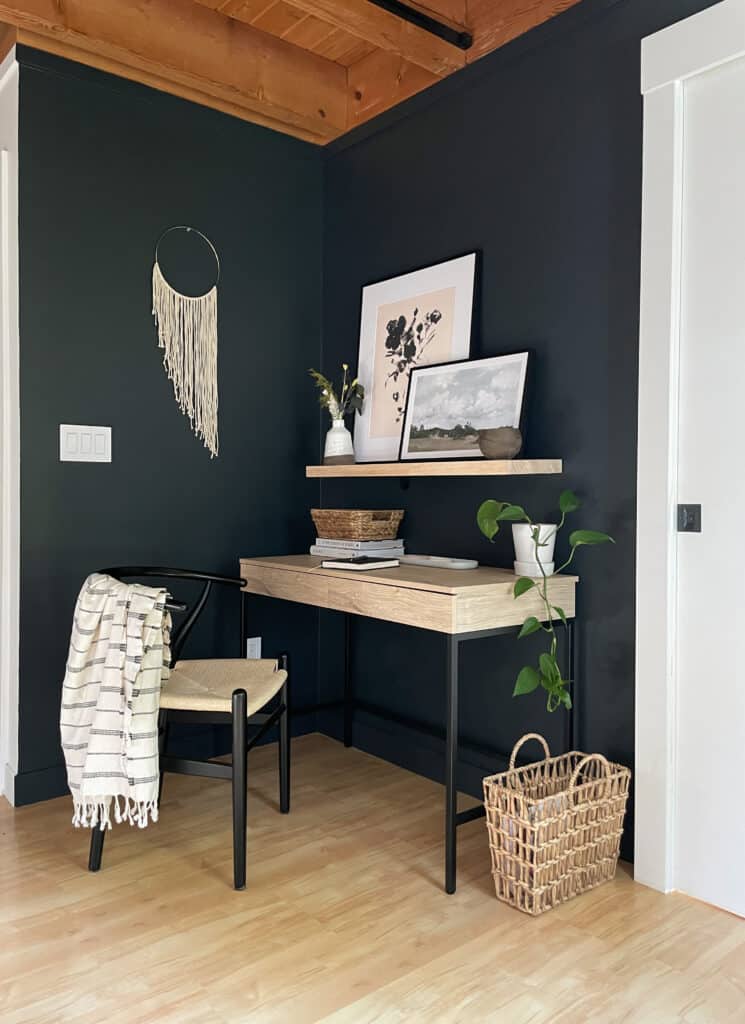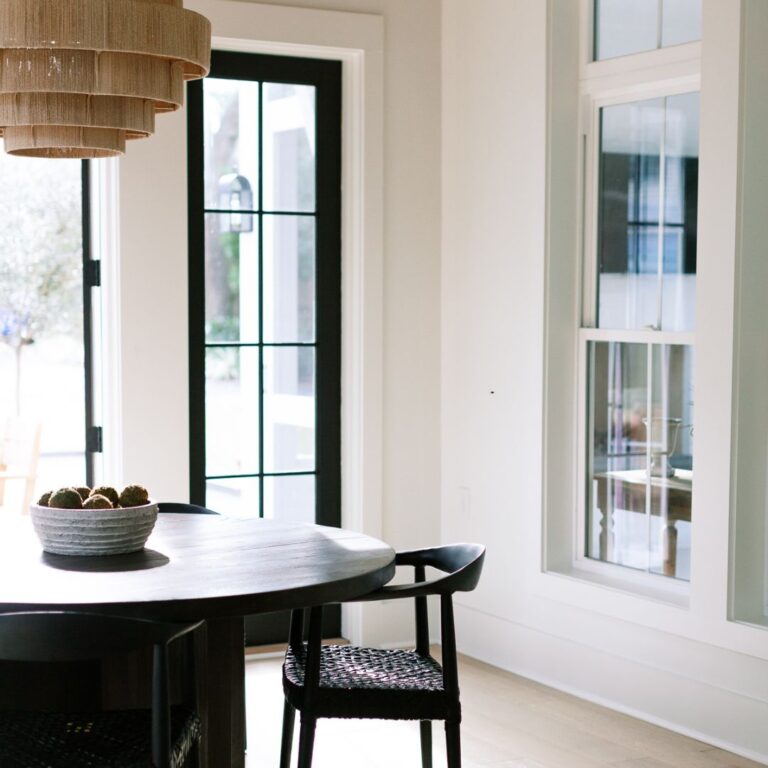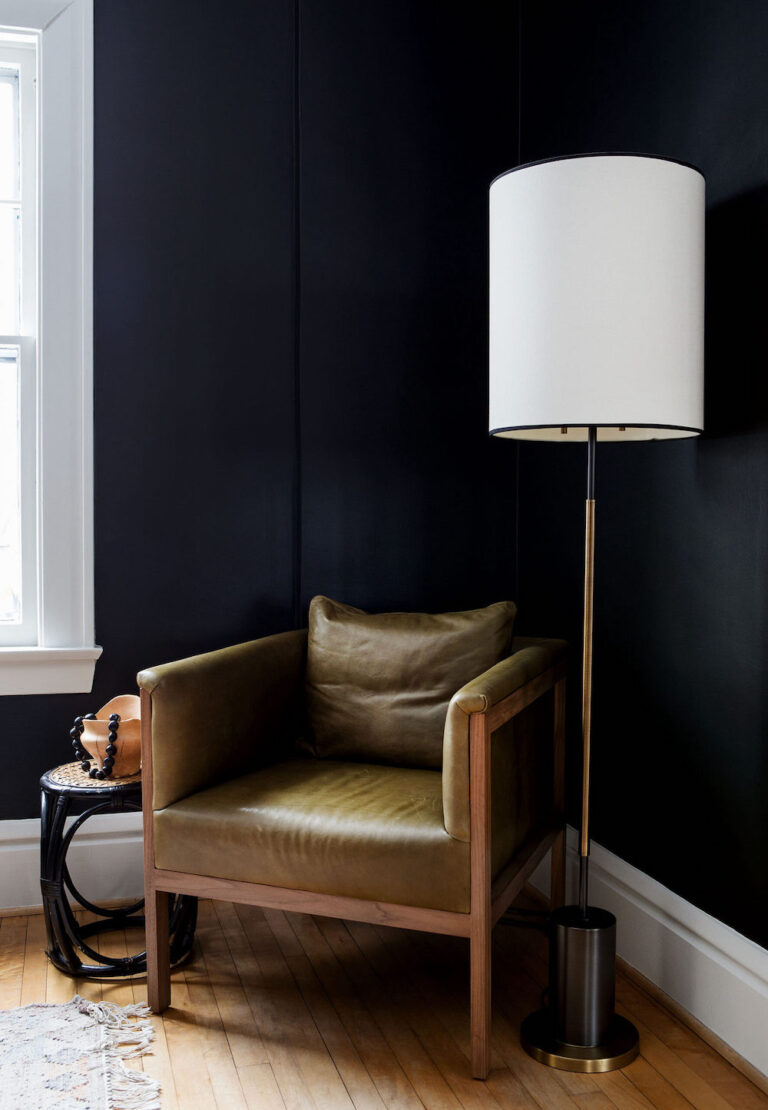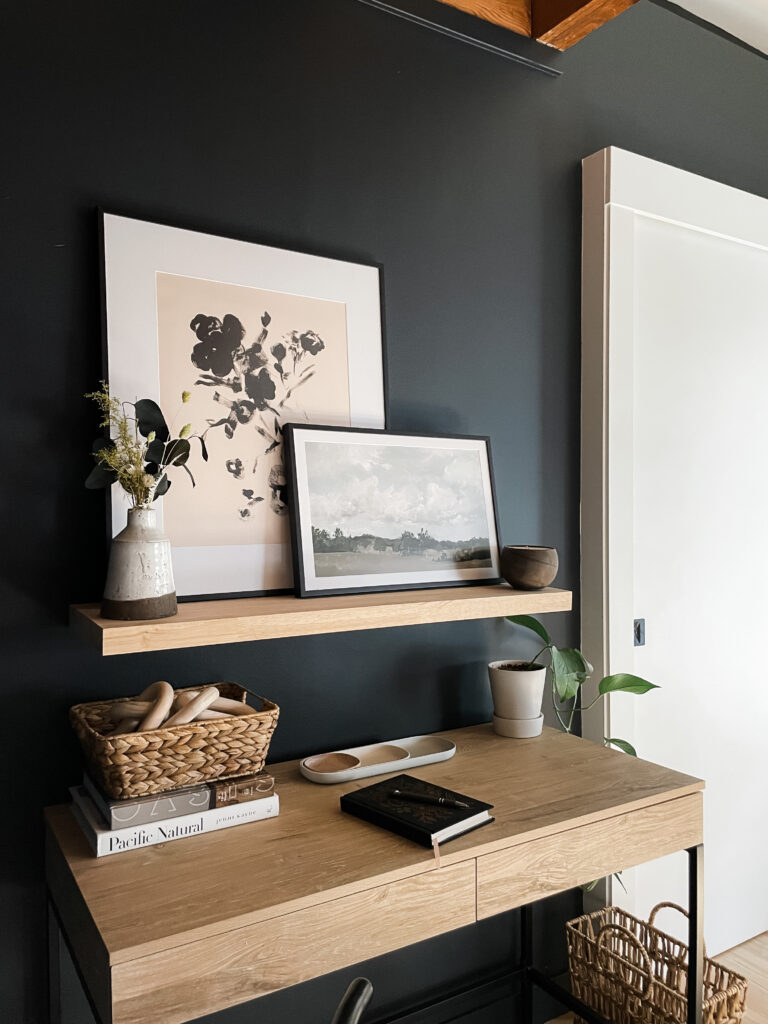How to Include the 7 Interior Design Elements in Your Home
Have you ever walked into a room and thought, “hmm, nice. But something is just ….off”? Maybe you feel like that now in your own space. I know I’ve experienced this. With home decor, we tend to focus on a couple things we feel comfortable with. Maybe it’s pillows (I see you and all your throw pillows out there!) or maybe it’s plants and the never ending search for wall paint. Well, chances are, if a room feels flat, it’s missing a key design detail. Here, I’m going to share the seven interior design elements and how to EASILY include them in your home.
As a studied topic, interior design technically includes seven elements for balanced design. This means that when rooms include all these pieces, it feels comfortable and aesthetically pleasing. It sounds more complicated that it is – but I’ve broken it down for you and include a free home decor checklist below so grab that too.

Ok, so in this post I’m going to break down each element and include a strategy you can apply to your room immediately (most without purchasing a thing!). This is honestly what I use to design most spaces, I mentally go through the list and think, hmmm, do we have that here? If not, that drives my next decision. This is so much easier than just trying to figure out what to buy and what looks good.
Free Design Checklist
1.Space
The first design element to think about is space—basically, how a room is laid out and works. This includes where the furniture goes, how people move around, and how the room feels overall. A good layout makes a space both comfortable and functional, whether it’s a cozy living room or a little home office.
A common spacing mistake is choosing furniture that’s way too big and makes the room feel crowded. On the flip side, having too little or disproportionate furniture can make the space feel empty and unfinished. The trick is to find a balance—pick pieces that fit the size of the room and create a layout that’s easy to move through while still feeling complete.

When choosing furniture, I look for simple, streamlined pieces that will incorporate easily into most spaces. This helps a lot with creating a functional space. If you’re looking for furniture pieces, check out 6 Minimal Console Tables , Simple Round Coffee Tables, and Low Profile Accent Chairs.
How to add this to your home? Right now, you can remove extra large furniture or pieces that block a natural flow. This is a good first step in figuring out the space of your room.

2. Color
This includes all the colors of a space as well as the hues (warm or cold). Yes – white, black, wood, and black are all colors too. As you know, color affects the mood and overall ambience.
As you probably know from reading this site, I prefer neutral colors such as a neutral whites, blacks, grays, and wood tones. I find them more calming and easier to work with. Wondering how to choose paint colors? Check out my Favorite Neutral Paint Colors for colors that work anywhere.
Right now, you can take a moment and look around the room you’re working on. Find an item with color in your room and identify the feeling it evokes. If it’s not a feeling you want for that space, remove it.

3. Texture
Give me all the texture. If I had to choose one interior design element that changes it all, texture is it for me. Texture adds depth and interest to a space. It’s what keeps it from feeling flat and one dimensional. It’s important to have a variety of texture: smooth, rough, soft, rugged, fuzzy, etc.
Texture can be in the actual house details and hard surfaces like wood flooring, metal railing, fireplaces, shelving and fixtures. Or soft surfaces like window and floor coverings, wall art, or bedding. You’ll likely find lots of texture inspiration by looking through my photos and I have lots of posts on the topic including How to Include Texture In Your Home and my Guide to Woven Wood Shades.
One action item you could do right away is include at least one tactile friendly item in each space. If you have a room that feels flat and not very cozy, missing texture might explain it.

4. Pattern
No surprises here. This decor detail refers to the repetition of patterns such as stripes, floral prints, and geometric shapes. Pattern adds visual interest and personality to a room – it doesn’t have to be a complex design, even simple stripes do the trick.
However, there’s no need to go overboard to include this element. We do not need a dozen chevron pillows. Patterns can be found in a wood floor, rugs, board and batten wall treatments, or even artwork. If you’re looking for ways to add pattern, check out my Best Neutral Rugs for Every Space and My Favorite Source for Online Art Prints as well as How to Layer Pillows Like a Pro.
How to include this element right now? I personally like to mix patterns – when it comes to artwork, pillows, and shelf decor I look for ways to combine florals with abstract lines. This keeps things fresh and dynamic.

5. Light
Light is probably the very first thing I notice in a space. Both natural and artificial lights make an impact by creating ambiance and highlighting features. It also influences the mood of a space.
I like to maximize natural light as much as possible and use only warm white light bulbs (the daylight ones cast a blue tone!). Read more about Warm vs Cool Lighting
While you’re looking at lighting, consider upgrading your fixtures. This is typically one of the first (and one of the easiest updates I make to a room!). Explore 7 Above the Sink Kitchen Lights, 9 Flush Mount Lights, and How to Install Wall Sconces Without Wiring.
What can you do right now? Change those lightbulbs from cool or daylight white to warm whites. Let in as much natural light as possible (ps. It’s ok to let some windows have minimal coverage, or even be bare!)

6. Form
Form in interior design is all about the shape and structure of the items in a room. This includes everything from furniture to decor like vases, plant pots, and pillows. A balanced space usually has a mix of forms to keep things visually interesting. There are two main types: geometric and organic. Geometric forms are man-made, like furniture with straight lines and sharp angles, while organic forms are softer and more natural, like plants or rounded decor pieces.
Sometimes, a room ends up with way too many square or boxy items, which can make it feel flat and boring. Think of a boxy couch, a rectangular coffee table, square pillows, books, and picture frames—it’s all the same shape! To balance it out, try adding some softer, more varied shapes. Throw in round pillows, a curved vase, a flowing plant, or a round mirror. Mixing up the forms in your space adds dimension and makes the room feel way more inviting.
Check out these posts for more ideas on playing with form: How to Choose Wall Mirrors (a variety of shapes here) and a curated list of Round Coffee Tables.

7. Line
Lines is the final element of design and are found in architecture, furniture, and details like beams, windows, or even decor. These tend to get overlooked and sound a little fancy but lines guide our eye, define spaces, and add visual interest. There are three main types of lines: horizontal, vertical, and dynamic, and each brings its own character to a space.
Horizontal lines, often created by low furniture like sofas, coffee tables, or shelving, bring a sense of stability and calm to a room. Vertical lines, on the other hand, create height and add energy, found in tall bookcases, floor-to-ceiling curtains, accent doors, or vertical plants like snake plants. Dynamic lines, such as those in arches, staircases, or patterns on rugs and wallpapers, add movement.
While all types of lines have their place, most spaces benefit from adding more vertical elements to balance out horizontal features and bring our eyes upwards. If your room feels grounded or flat, try adding height with a tall mirror, tall plants, curtains hung above the window, or vertical artwork.
I’m always looking for ways to add vertical lines and have related articles including How to Style a Photo Ledge and All My Kitchen Details Revealed.
Final Thoughts
Ok, hopefully you now have a better idea of the seven design elements and how to include them in your space. By including all of the factors (space, color, texture, pattern, light, line, and form) into your styling, you’ll create a more balance and interesting room!
The JD School of Design gives a thorough and detailed outline of each element if you’d like to learn more.






